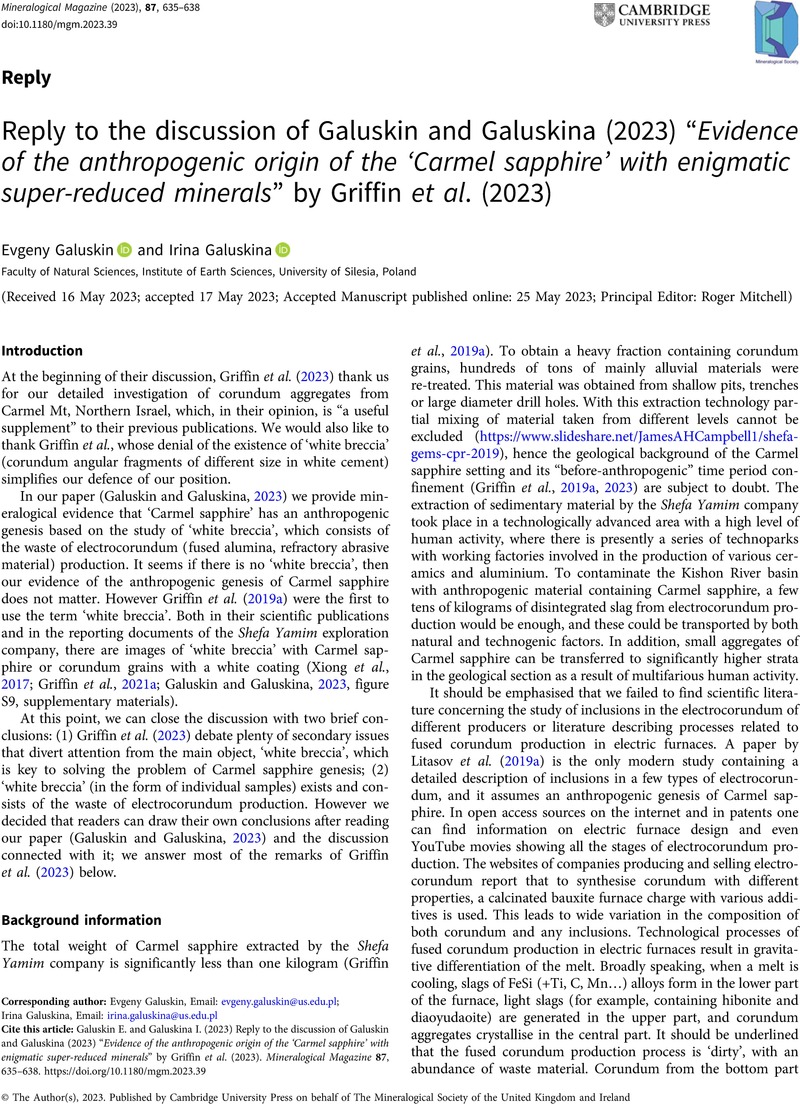Crossref Citations
This article has been cited by the following publications. This list is generated based on data provided by Crossref.
Ma, Chi
Cámara, Fernando
Bindi, Luca
and
Griffin, William L.
2024.
Toledoite, TiFeSi, a New Mineral from Inclusions in Corundum Xenocrysts from Mount Carmel, Israel.
Crystals,
Vol. 14,
Issue. 1,
p.
96.
Griffin, W.L.
Bindi, L.
Cámara, F.
Ma, C.
Gain, S.E.M.
Saunders, M.
Alard, O.
Huang, J.-X.
Shaw, J.
Meredith, C.
Toledo, V.
and
O'Reilly, S.Y.
2024.
Interactions of magmas and highly reduced fluids during intraplate volcanism, Mt Carmel, Israel: Implications for mantle redox states and global carbon cycles.
Gondwana Research,
Vol. 128,
Issue. ,
p.
14.




Target article
Evidence of the anthropogenic origin of the ‘Carmel sapphire’ with enigmatic super-reduced minerals
Author response
Reply to the discussion of Galuskin and Galuskina (2023) “Evidence of the anthropogenic origin of the ‘Carmel sapphire’ with enigmatic super-reduced minerals” by Griffin et al. (2023)